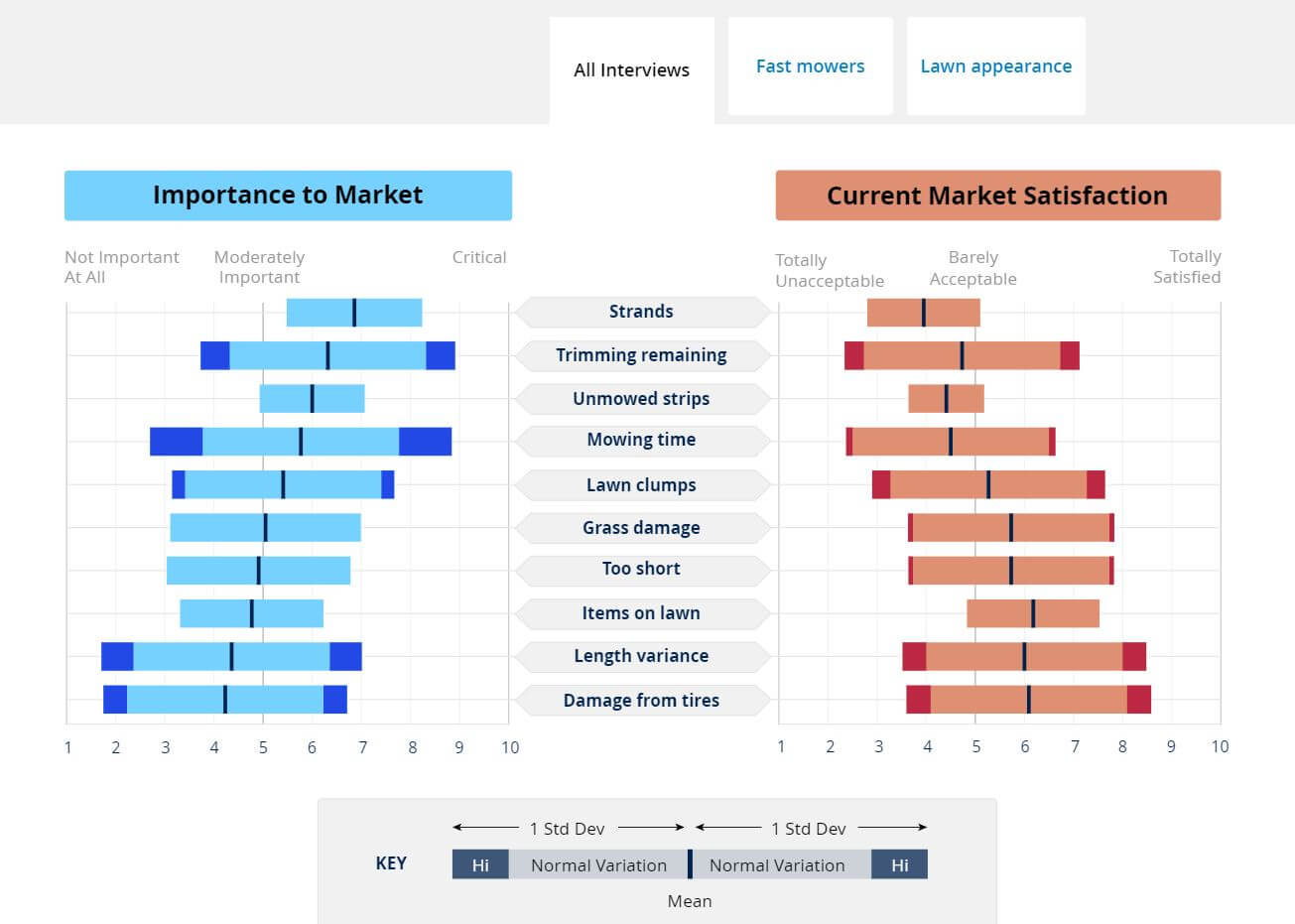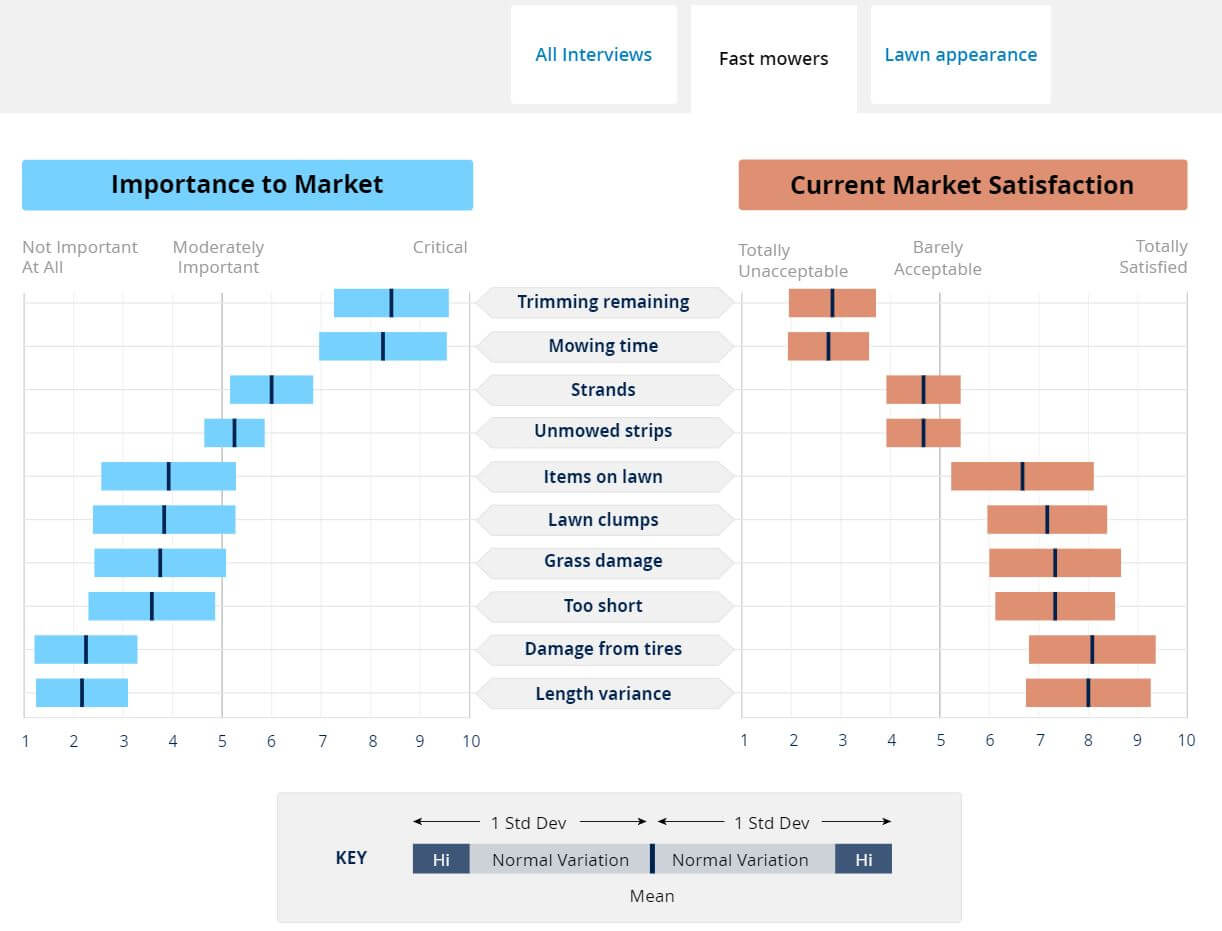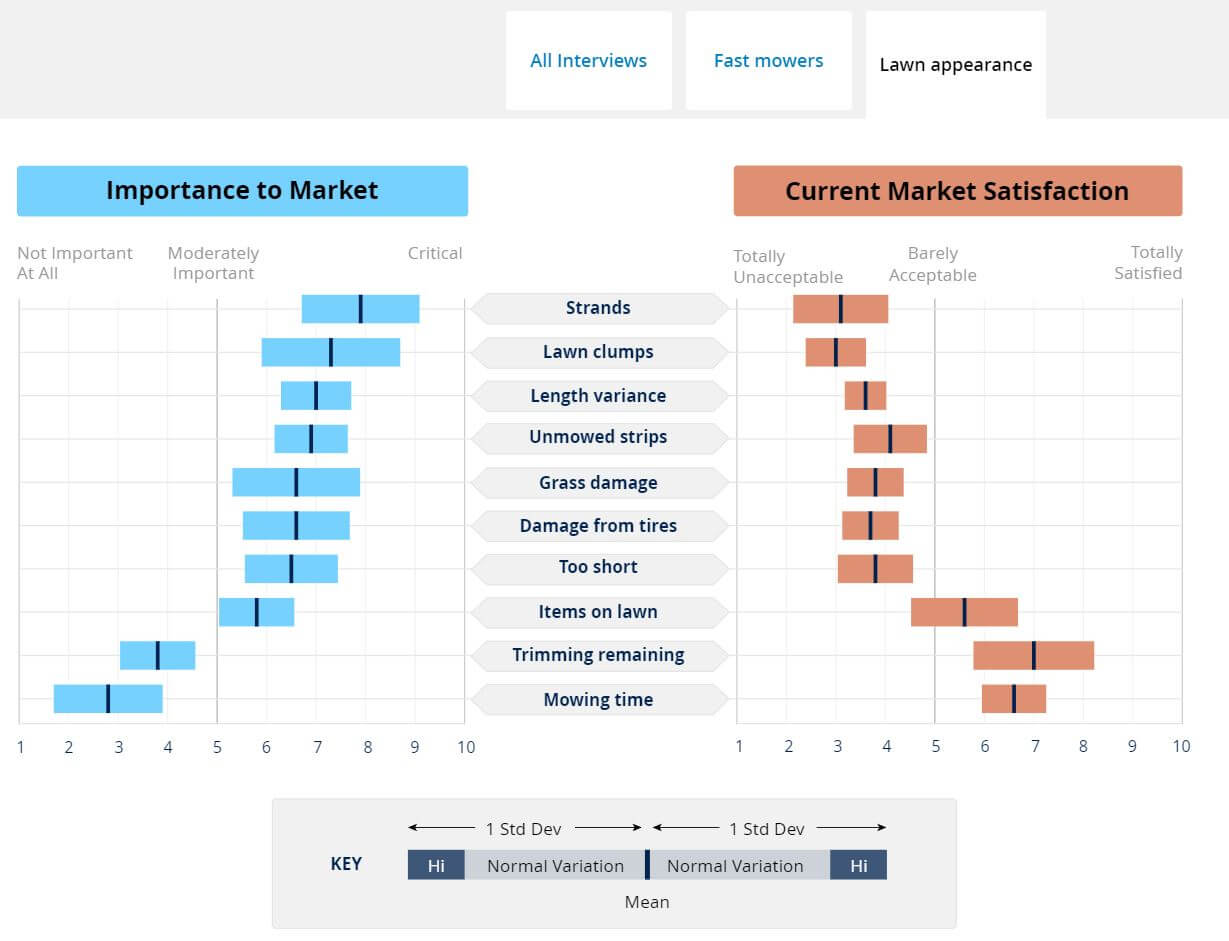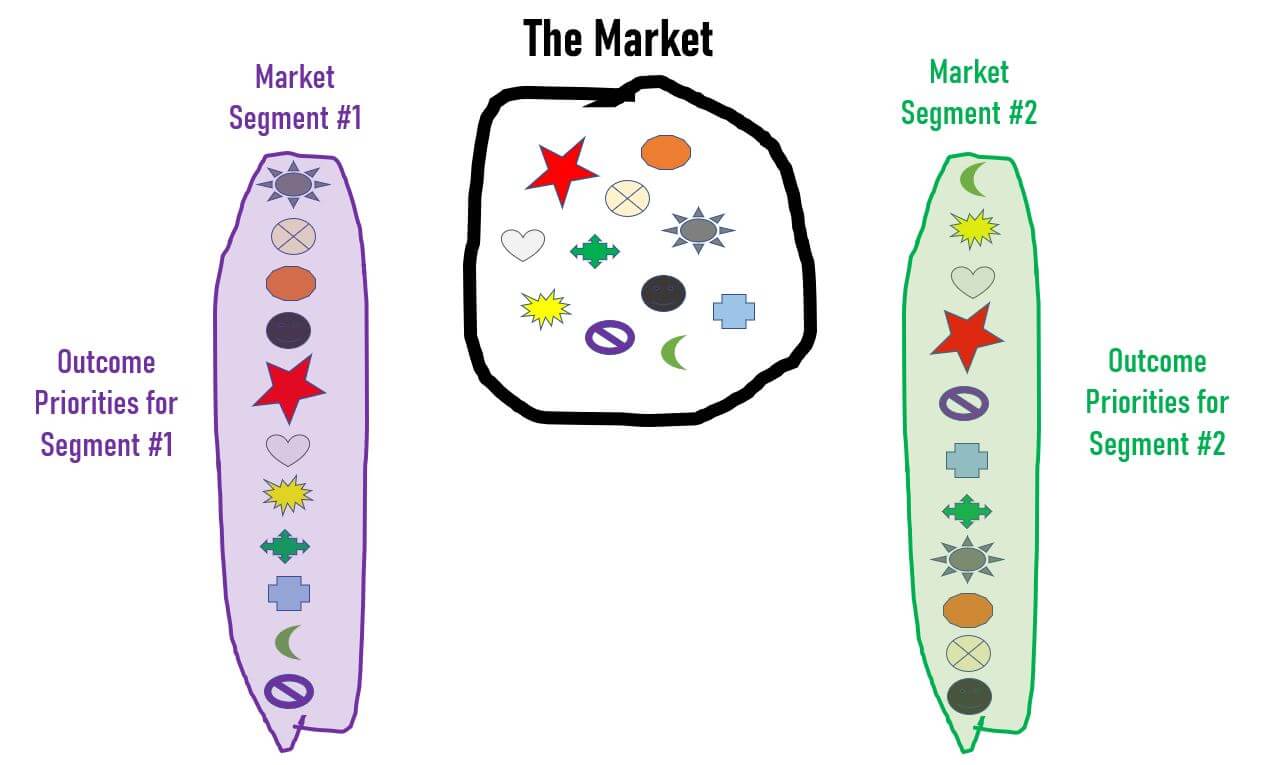Market Segmentation with Examples: Bring on the Magic

Market segmentation is covered in every business curriculum, and for good reason. The best of the best, in every craft, maintain a focus on fundamentals. Consider that the great Tiger Woods continues to perfect his golf swing even as he approaches the end of his career. For innovation, few concepts are as fundamental as market segmentation. In this article, we go deep. Exploring market segmentation with examples. We’re “driving” to the core. The core of innovation, new product development, and of course, marketing itself.
But first… this term, “market segmentation”…
But isn’t market segmentation well understood?
Sort of. But there are many ways to segment. The scheme depends upon the goal. Therefore, the big problem about “market segmentation” is to ensure the scheme works for the context.
What is Market Segmentation?
Market segmentation is the process of dividing a market into smaller bits. For example, you could segment by product, geography, customer type, value chain position, and so on. The variables of segmentation vary with the objectives.
Consider the following market segmentation examples. First, we could partition a market by product type. For example, if we work for a lawn care equipment company, we might divide our market into walk-behind mowers, lawn tractors, and zero-turn mowers. Or, we could use a market segmentation scheme based on customer type, such as residential, commercial, governmental, etc. This would be helpful to create budgets for incentive programs. For another, we might segment by geography for sales purposes.
But, here’s the real question. For innovation, what marketing segmentation scheme should be used?
Market Segmentation: What’s the best way to sub-divide the market for innovation?
For innovation and new product development, a needs-based segmentation is best. Blueprinting practitioners know that a market segment is referred to as a “cluster of customers with similar needs.”
To go deeper still, we must explore the idea of a “market,” of “needs,” and what it means to have “similar” needs. Moreover, it’s helpful to use terms from “jobs-to-be-done” philosophy.
Consider the following from “The Statue in the Stone: Decoding Customer Motivation with the 48 Laws of Jobs-to-be-Done Philosophy”:
- Law #40: A market has two components: a job and a job executor.
- Law #41: All job executors within a market share the same list of Outcome Statements.
- Law #42: A market segment is a group of job executors within a market that shares a common priority order of Outcome Statements.
Let’s unpack each.
What is a Market?
Law #40: A market has two components: a job and a job executor. Returning to the lawn equipment example, let’s select “Mow the lawn” as the job and the “residential homeowner” as the job executor. Thus, our market is defined as Residential homeowners who mow the lawn.
From Law #41, we know that residential homeowners will have the same outcomes. Consider the following examples:
- Minimize the frequency of visible clumps on the lawn
- Minimize the likelihood of killing the grass due to cutting it too short
- Minimize the amount of grass trimming to do afterward
- Minimize the time to mow the lawn
- Minimize the amount of variance around the desired grass length
- Minimize the likelihood of running over items, e.g. sticks, rocks, trash, etc.
All residential homeowners want to mow their lawn well. And therefore, they have the same list of desired outcomes. Does this mean that the group “residential homeowners who mow the lawn” is a market segment?
No, it doesn’t.

The problem is that some sub-groups will define “well” differently. It’s an easy point to miss. After all, we’re discussing the same category of person, the residential customer. Likewise, the job is the same, to mow the lawn. But still, various sub-groups may define success differently. That’s the distinction.
And it’s the beginning of knowledge about market segmentation. Bringing us to a question, then “What is a market segment?”
What is a Market Segment?
From Law #42, A market segment is a group of job executors within a market that shares a common priority order of Outcome Statements. The best way to understand this is to present market segmentation with examples.
Let’s say that we have one group of residential homeowners, for whom the most important outcomes are :
- Minimize the frequency of visible clumps on the lawn
- Minimize the amount of variance around the desired grass length
Members of this segment have a perfectionist mindset about appearance. There’s little concern for anything else. In fact, they will sacrifice their time, their effort, and their treasure for a beautiful lawn.
Market segmentation gives us this group. This group that we call a “segment”. They’re a club of sorts. A club… with common values. Common priorities. Therefore, let’s name it the “Lawn Appearance” segment.
The next group within our examples has different values entirely. In fact, their top priorities are to:
- Minimize the time to mow the lawn
- Minimize the amount of grass trimming to do afterward
For this segment, it’s about time. They don’t care as much about appearance. Not as much as finishing ASAP. They just want the job done. Finished. Over with. Mowing’s a chore, not an artistic pursuit.

In this second of our market segmentation examples, we name this club the “Fast Mowers” segment. The segment name refers to the group’s theme.
Using Importance and Satisfaction Data for Segmentation
Note the Importance and Satisfaction data below (as generated within Blueprinter® software) for our example. First, let’s look at the data for the entire market. Then, we’ll look at the segment level. For the entire market, note the wide breadth of variation for each outcome:

Blueprinter software highlights the excessive variation with the darkened bar ends. This signals the existence of multiple segments within, and that we shouldn’t trust the averages scores for Importance and Satisfaction.
Meanwhile, note the graph below for the Fast Mower segment only. We now have tight standard deviations, and of course, a different priority order:

And likewise for the “Lawn Appearance” segment example:

With customer data, such as we have here within Blueprinter software, we can be confident in our segmentation.
Remember: Both segments are still parts of the same market
Members of a market have the same list of desired outcomes in common. A market segment has the same priority order of desired outcomes in common. Therefore, the Lawn Appearance segment still values the ability to “Minimize the time to mow the lawn”. Likewise, they’d also like to “Minimize the amount of grass trimming to do afterward.”
Along the same lines, the Fast Mowers segment would like to “Minimize the frequency of visible clumps on the lawn”. As they would also like to “Minimize the amount of variance around the desired grass length.”
Members of a MARKET have the SAME LIST of desired outcomes in common. Members of a MARKET SEGMENT have the SAME PRIORITY ORDER of desired outcomes in common.
Within the same market, the distinguishing characteristic of the segment is not the list of outcomes. It’s the priority order. Remember:
- Law #40: A market has two components: a job and a job executor.
- Law #41: All job executors within a market share the same list of Outcome Statements.
- Law #42: A market segment is a group of job executors within a market that shares a common priority order of Outcome Statements.

What’s so powerful about market segmentation?
Once we’ve identified a segment, by definition, we know the customer’s priorities. These priorities are the success criteria for their job-to-be-done. This is powerful reconnaissance. With many uses. For starters, it means that we can:
- Create winning new products
- Develop an operations strategy
- Communicate with customers
Learn how Blueprinter® software can help with market segmentation
Create winning new products
Of course, with Blueprinting, innovation is the goal. Consider the market segmentation with examples above. Within the “Fast Mowers” and “Lawn Appearance” examples, we can imagine impactful new features.
The Fast Mower Segment
For the “Fast Mowers”, we might use wider decks to process more grass. We might use controls that let us mow closer to objects. (Reducing the amount of trimming) Further, we might increase the ground speed, increase the fuel tank size, or use more aggressive blades. We know we can sacrifice performance elsewhere to get the job done faster.
The Lawn Appearance Segment
For the “Lawn Appearance” segment, we need a different plan. Instead, we should probably begin with sharper blades, to cut grass cleanly. We could go with a larger discharge chute to avoid clumping. We could limit the steering angle, reducing lawn damage from sharp turns. Also, we might go with wider tires to reduce soil compaction.
This illustrates how to use market segmentation with examples for new product ideas. It’s what needs-based segmentation can deliver. But what about the operations strategy? Surely, it couldn’t help with that. Right?
Au contraire! It certainly can.

Develop an operations strategy
Let’s begin with the premise that customers don’t necessarily want to make trade-offs between time and lawn appearance. Even within our market segmentation with examples, the “Fast Mowers” segment would still like a great lawn. And the “Lawn Appearance” folks would not object to finishing sooner.
As helpful as segmentation is, it’s given us a problem. A manufacturing puzzle. How do we build tractors to address multiple segments? Should we build two distinct models? One for Fast Mowers and one for Lawn Appearance? Or, should we just go with just one? One tractor to rule them all?
Learn how Blueprinter® software can help with market segmentation
Option #1: The Two Product Solution
With two unique tractors, development is simple. Engineers use the top outcomes for their segment as a compass. We can likely even commit the heresy of adding cost! (That is, as long as it improves performance against top outcomes.) However, this is an expensive strategy. Expensive to design. Expensive to maintain.
It takes more engineering resources. And, since there won’t be many common parts, we can expect higher procurement costs.
And after development, we have to keep both SKUs in inventory. Tying up cash that could be used elsewhere. Moreover, the complications continue. Forecasting will be trickier. Higher costs will be everywhere. An ongoing burden.
And of course, we’re passing down costs to distributors too. In forecasting, training, product knowledge, and inventory management are just a few examples.
So, perhaps we go to the opposite extreme, and just build a single model?
Let’s take a look.
Option #2: The Single Product Solution
With a single model, we’ll gain efficiencies lost with a two-unit strategy. However, we’ve now put product managers and engineers in an unfortunate position. They must negotiate through the confusion of priorities. Should the mower be able to turn quickly, to finish the job faster (even at the risk of lawn damage)? Or would it be better for the blades to turn slowly? Perhaps the tires should be aggressive for fast movement or instead, should they be smooth to prevent digging? Should the blades be thin and light, for precise cutting, or thick to process more grass?
In the single product scenario, the laws of physics come into play. As such, trade-offs must be made.
So, what should we do?
An understanding of market segmentation with examples provides guidance. Before solving the riddle, let’s clarify what not to do. We don’t take the priorities of the “Fast Mowers” and the “Lawn Appearance” segments and average them. That’s the worst strategy of all. By doing so, we’re almost certain to build something that nobody wants.
So, what’s the answer? In reality, it depends! It will depend upon some variables we’ve left out of the illustration. If both segments are large and attractive, we might pursue the two-unit solution. If one is attractive and the other is not, we might build for the attractive one – and selectively add cost-neutral features for the other.
However, we should strongly consider a platform-based strategy. This allows us to efficiently target both segment examples.
Option #3: The Platform Strategy
The platform strategy (as defined by PDMA) is a well-established product development approach. And for good reason. It lets us be efficient in the pursuit of multiple segments. With a platform strategy, we first select a core platform. This “platform” will be the common architecture that forms the base for multiple models. Upon this base, we will build multiple configurations. It’s a strategy of modularity.

To proceed, we define what must be common between the models. Determining this “platform” is an exciting engineering task. Within our examples here, we might define it as the chassis, transmission and engine. And from there, we design the system so that outer modules can be exchanged. These might be components such as mower decks, tires, or outer styling parts. With the platform strategy, we pursue both segments while managing complexity.
Communicate with customers
Finally, our market segmentation with examples helps us to better communicate with customers. For the “Fast Mowers” segment, the outcomes are statements of “what”. That is, they’re the statements of “what” to communicate to customers. Remember, these were:
- Minimize the time to mow the lawn
- Minimize the amount of grass trimming to do afterward
In turn, it’s marketing’s task to determine “how” to communicate these benefits. For the “Fast Mowers” segment, the message should be about time. Less time. Reduce the time to mow. Get back to what you really enjoy doing.
Meanwhile, what about the other example, “Lawn Appearance”? Marketers might show the perfection of a lawn well-mowed. The messages should resonate with pride rather than the idea of being a chore.
Putting market segmentation to work
To get started, familiarize yourself with jobs-to-be-done. In particular, the idea of a market and market segment. A market is a job and a job executor. All market participants share the same list of desired outcomes. Additionally, these outcomes are the criteria that customers use to evaluate “how well” a job is done. Outcomes are also, therefore, the criteria that customers use to evaluate products. All paths should lead to the creation of market segmentation with examples.
Admittedly, this concept can appear simple. Don’t let this simplicity distract from the power of segmentation. And in practice, it’s part art and science, an iterative process that unlocks its secrets only with persistence and curiosity through the handiwork of a talented data analyst. Further, the process works best when also guided with more inputs than just data but also qualitative market knowledge.
It’s perhaps the frequent usage of the words “market segmentation” that numb us to the magic within. So, don’t be fooled! Just as the professional musician never stops playing scales, the innovator should revisit market segmentation often. And when recalling these ideas, don’t remain in a world of abstractions. Instead, develop your market segmentation with examples to make the idea come alive.
To go deeper, we recommend The Statue In the Stone: Decoding Customer Motivation with the 48 Laws of Jobs-to-be-Done Philosophy.
Comments